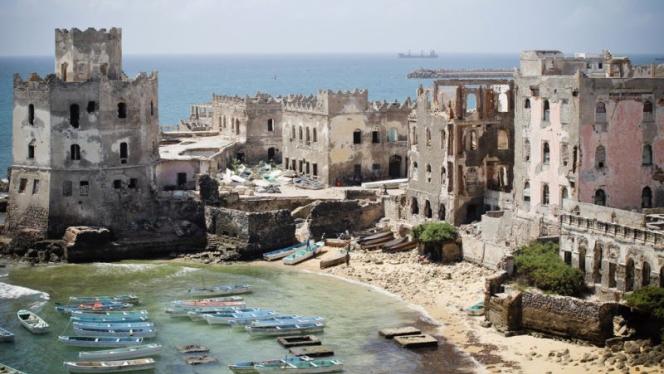Tuesday 19 November 2024
How to Write about Somalia

Always use the words ‘crisis,’ ‘instability,’ ‘conflict,’ ‘anarchy,’ or ‘terror’ in your title. Subtitles may include the words ‘refugee,’ ‘militant,’ ‘warlord,’ ‘failure,’ ‘collapse,’ ‘clan,’ ‘radical,’ ‘terrorist,’ ‘extremist,’ or ‘pirate.’ Also useful are words such as ’nomadic,’ ‘pastoral,’ and ‘tribal,’ as well as made-up verbs combined with these other words, like the ‘Somalization of the crisis.’
Use the image of an elder wearing a tall koofiyad cap, traditional macawis sarong, and holding a stick. Alternatively, you may use the image of an underweight young man holding an AK-47. He may be on a boat or in a vehicle, these details are not important. But make sure you describe how he has been chewing qaat and what effect the stimulant has on promoting irrational and violent behaviour. Describe their teeth in detail.
If you must use a woman, you have two options. Either a close up with enough space for a young child strapped to the woman to be visible in the frame, or a more distant shot that shows a faceless group of women as an undifferentiated mass of cloth. In your writing, describe their veils and traditional garb, referring to their bright colours and exclaiming your surprise that they are not dressed entirely in black. Remark on their faces and how, despite their intense blackness, appear quite delicate and un-African to your eye.
Emphasize that the clan is the key to understanding this relatively simple, unsophisticated people, and that everything – from civil war to music preference – can be explained through this. Include a proverb of uncertain origin to emphasize this point. Always be specific about the person’s clan, like “the Hawiye man,” as it is more relevant than any actual name. They are all named Abdi or Mohamed anyway. The only exception to this is in nicknames, which you must elaborate upon, as they offer much insight into their tribal character and violent tendencies. Note that there are no individuals in Somali society, only the collective. It is thus unimportant and indeed unproductive to seek out a wide range of opinions when writing. Abdi “AK” and Mohamed “Crusoe” think how they look: alike.
Though hopelessly primitive, express your admiration for the nomad. Describe how, despite the harsh landscape, the specter of tribal violence, and backward cultural tendencies, he is noble and resilient. The nomad is always male, and always proud. Quote Sir Richard Burton’s observation about Somalis as a “nation of bards,” and detail their rich tradition of poetry. Describe their camels, and let your reader know you have tried camel milk, and if you are particularly daring, camel meat. It is tough, if not slightly bitter, like the nomad. Sympathize with how his way of life, untouched for hundreds of years, is threatened by the outside world. There is no need to mention Somali women, urban or rural, unless you are discussing their veils or their mutilated genitals.
Thoughtfully meditate on the ruins of colonial architecture in cities like Mogadishu, destroyed by the Somali when left to their own devices. Avoid depicting the darker aspects of colonial rule, and instead focus on more pleasant and romantic dimensions, like its Art Deco style villas and gelato. Describe the cosmopolitan nature of the colonial period and early independence years, and how women once wore bikinis on Liido beach before they adopted their large cloth tents. Bemoan modernity. How could the Somalians reject their timeless, tribal ways and attempt a modern nation-state? Disregard context and wonder whether the Somali adventure in politics was always destined to end in statelessness with these tribal nomads at the helm.
Remind your reader that despite this, there are some things in Somalia that work, that there is a Somalia you never see. They have cellphones, after all.
The essay is republished by Geeska with permission from the author.






